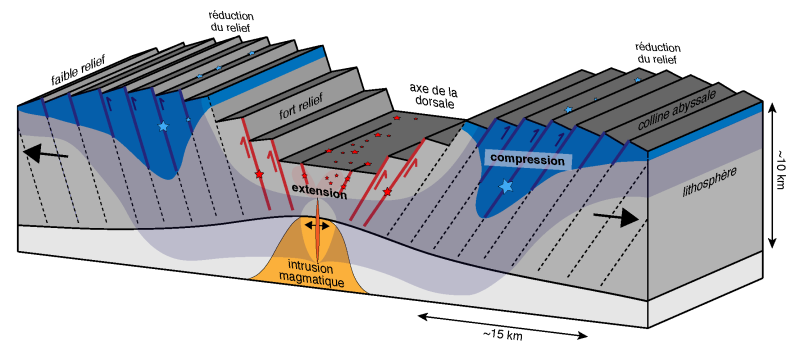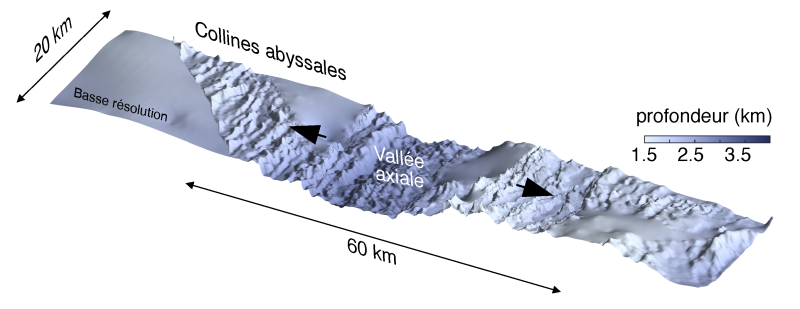Follow us on Google News (click on ☆)
Volcanic activity there produces a basaltic crust which, upon cooling, fractures under the action of tectonic forces. Large faults thus cut into the sea floor, sculpting regular escarpments similarly to books sliding against each other on a shelf.

Illustration of the inversion process of abyssal hills through compression at the flanks of the ridge.
© Reference
This geological activity manifests through numerous extensional earthquakes, which are signatures of the plates' divergence. However, in September 2022, global seismological networks recorded about a dozen compressional earthquakes on either side of the Atlantic Ridge, off the coast of Ireland.
To understand these atypical events, a team of researchers from CNRS Earth & Universe modeled the deformation associated with the expansion of an ocean. They identified a superficial compression zone on either side of the ridge axis, induced by folding of the young oceanic lithosphere.
Their most unexpected finding is that this compression zone causes the major ridge faults to slide in reverse, reducing up to 50% of the abyssal relief in a few hundred thousand years. This idea had been proposed in the 1970s, but was abandoned due to a lack of seismic manifestation of the phenomenon. This new study elucidates the mechanics of the process and demonstrates it in the Atlantic and Indian Oceans, while also explaining its largely aseismic nature.

Bathymetry of the Atlantic Ridge at 54ºN, where the 2022 compressive earthquakes occurred.
© Reference
The 2022 event is all the more exceptional since it was likely triggered by a magmatic intrusion, making a process that would otherwise have remained silent seismic. We now know that abyssal hills do not form like steps of a staircase, but rather like those of an escalator, which open and then close as the reliefs migrate on the conveyor belt of tectonic plates.
Reference:
Olive, J.-A., Ekström, G., Liu, Z., Buck, W.R., Escartín, J., and Bickert, M., Mid-ocean ridge unfaulting revealed by magmatic intrusions., Nature, 2024, DOI: 10.1038/s41586-024-07247-w.